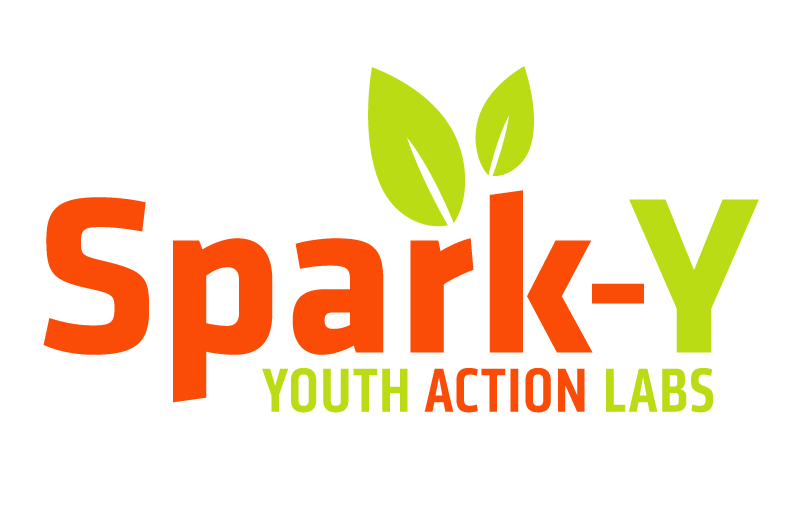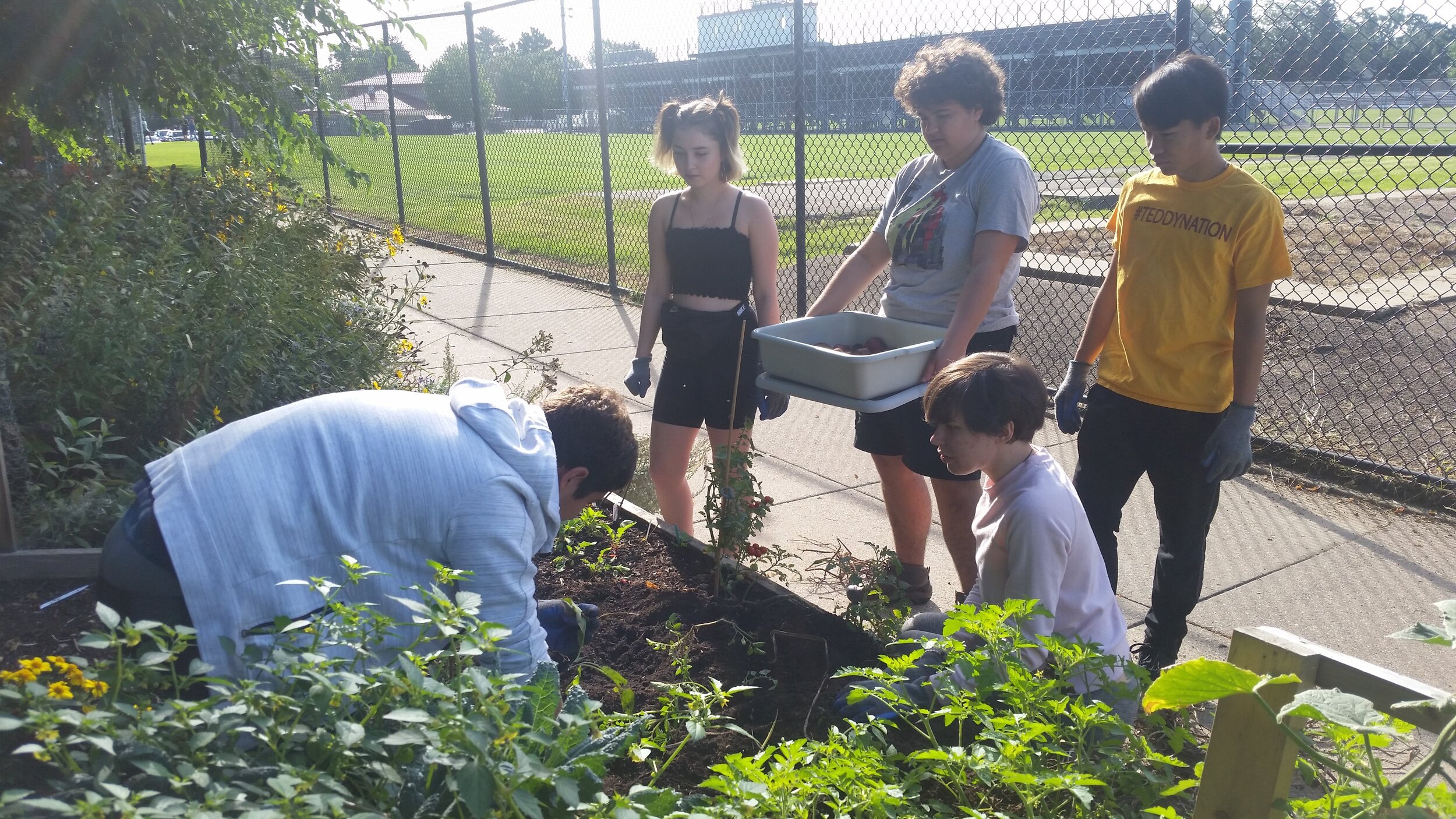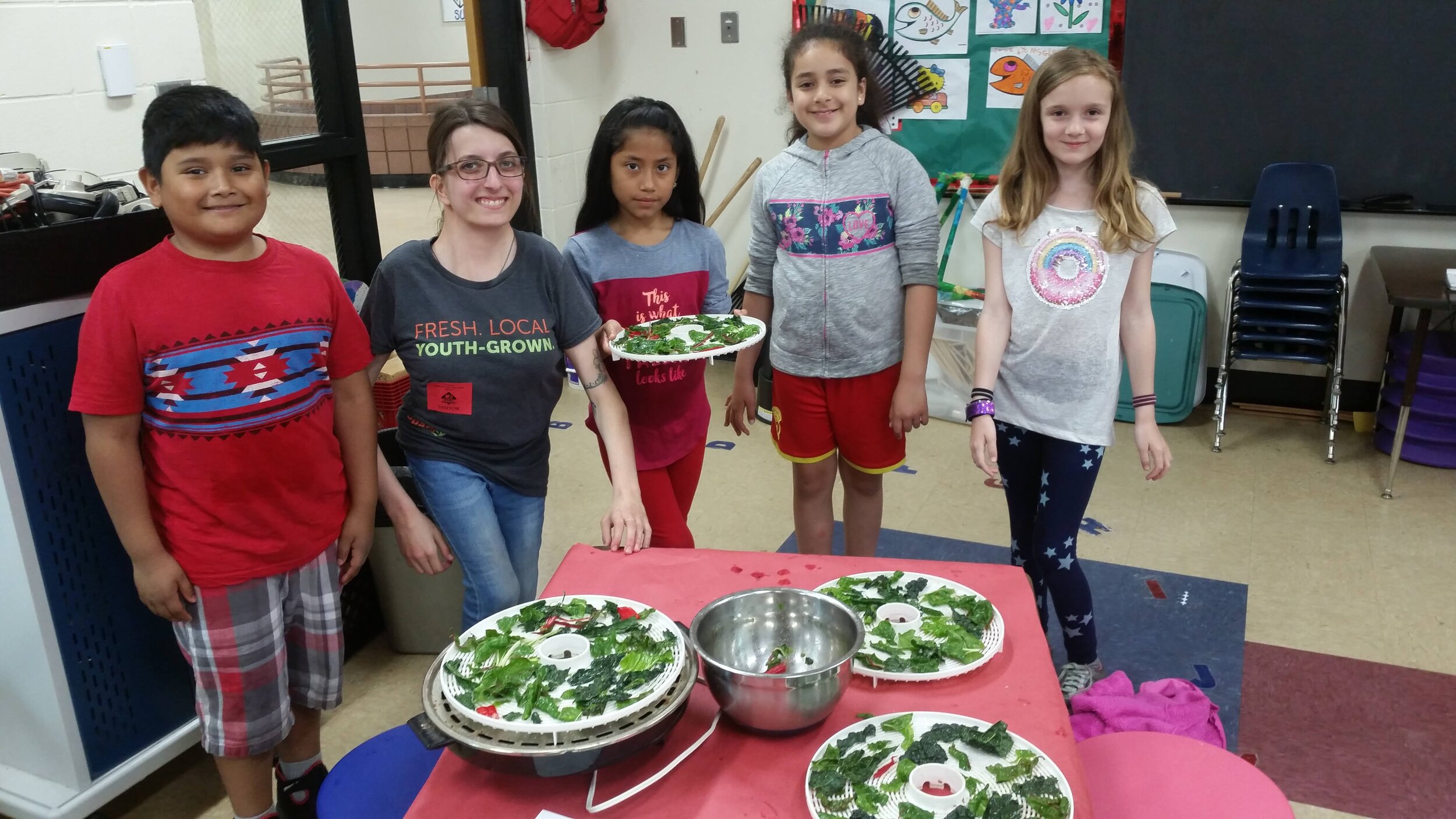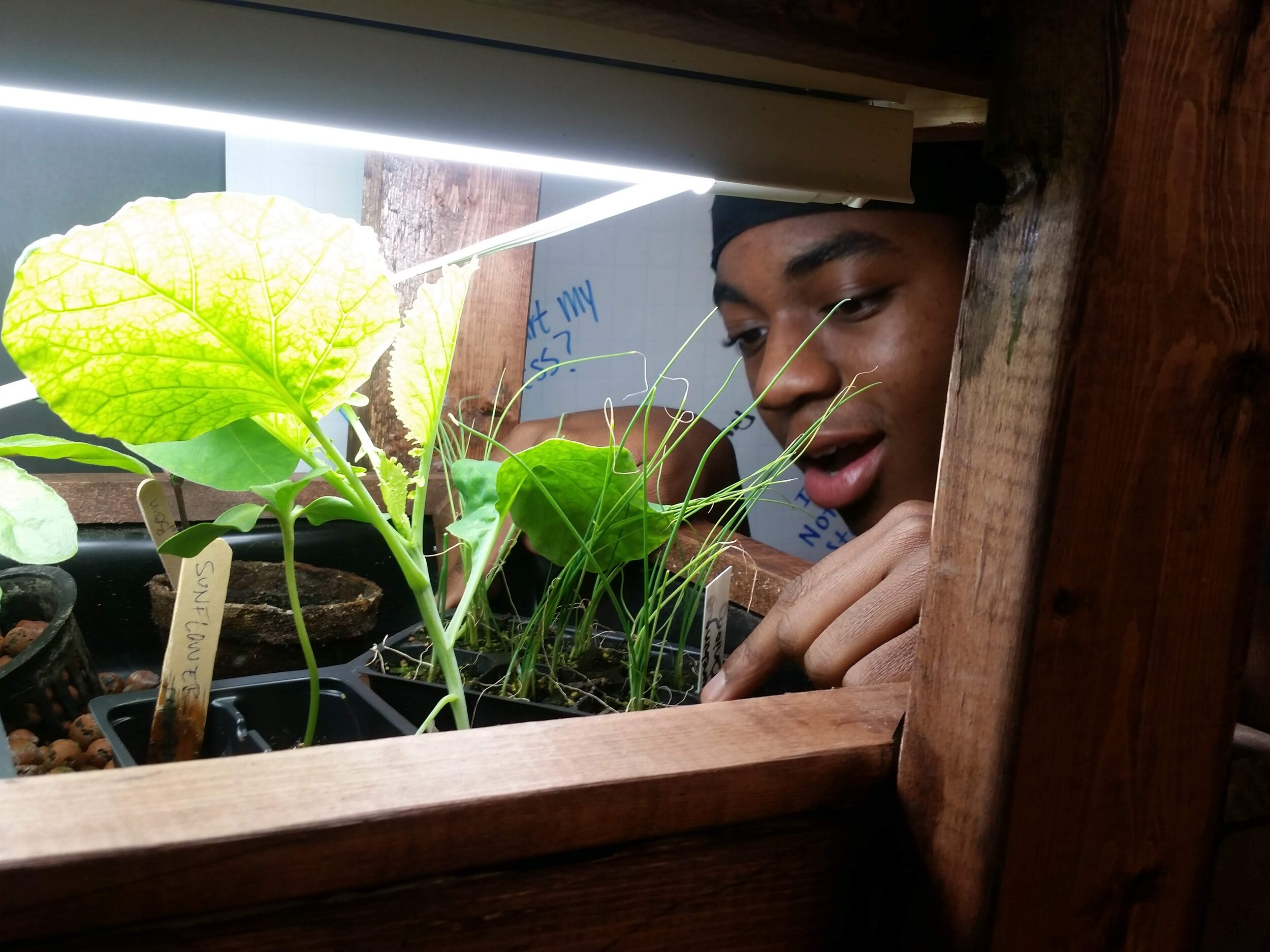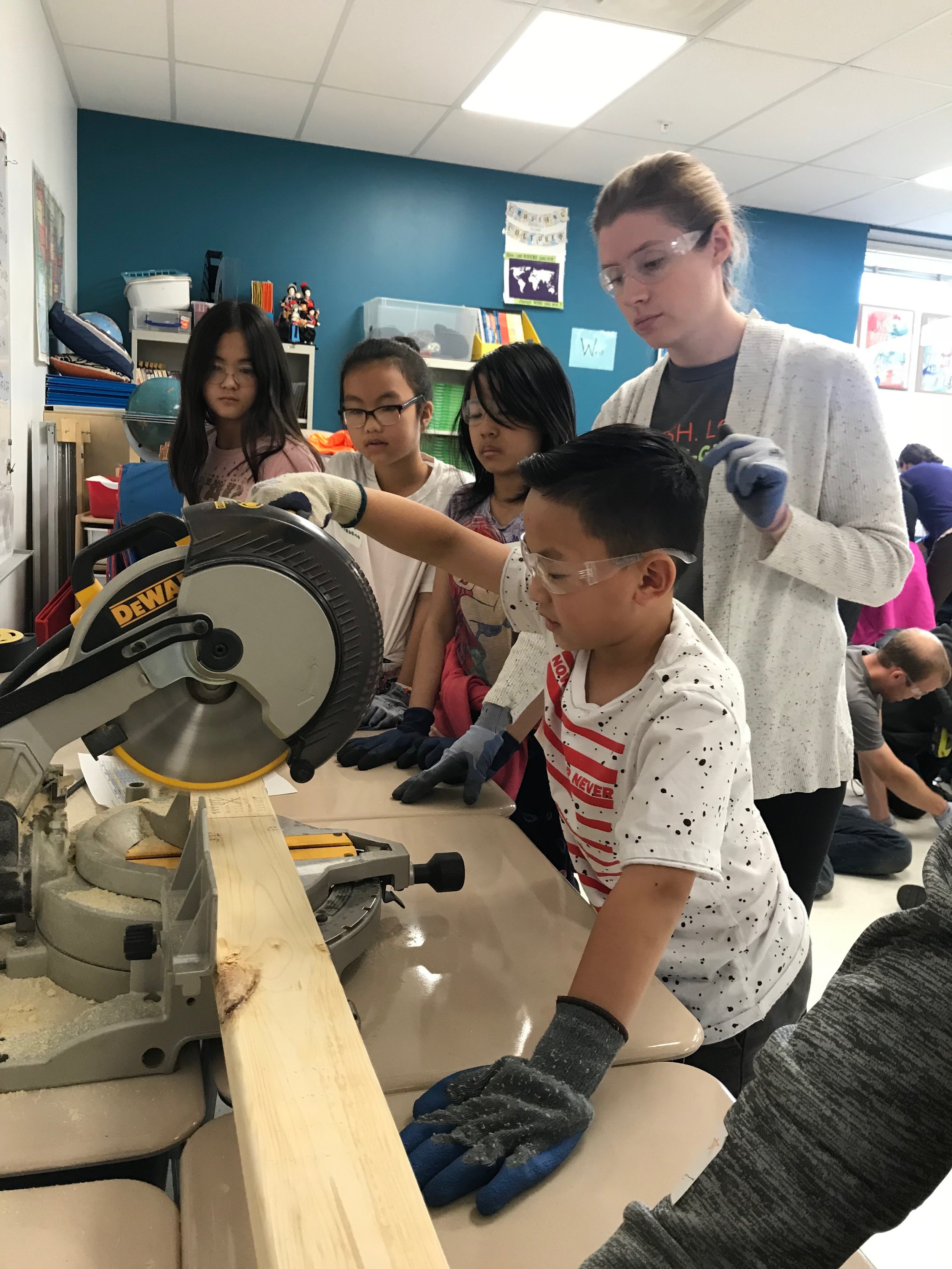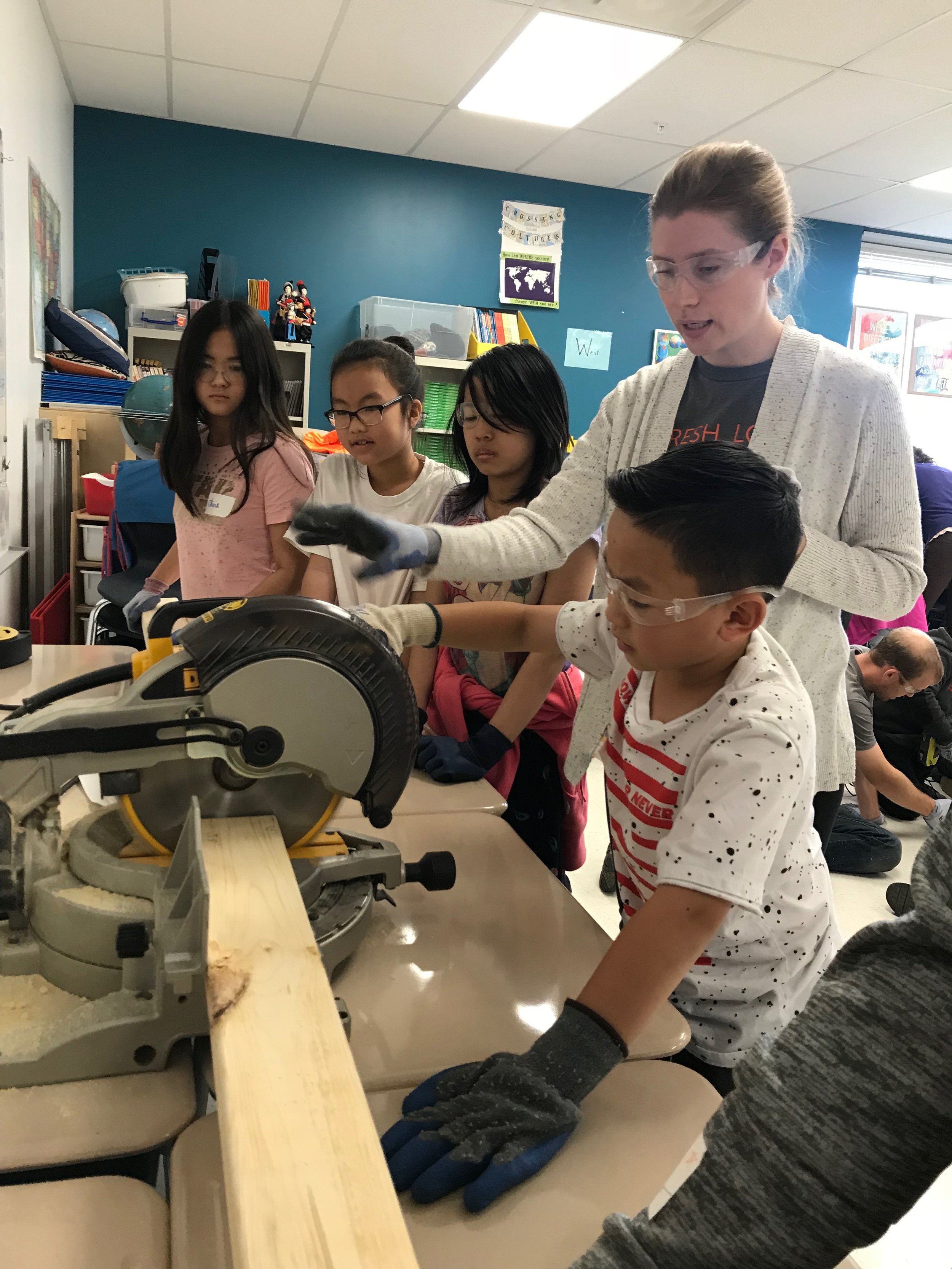The following blog post was written by Patrice Banks, Spark-Y Sustainability Educator, on STEM education at our school program partner Northeast Middle School.
Framework of STEM
Science, technology, engineering and mathematics(STEM) in early education plays a key role in the sustained growth and stability of our youth’s creativity. STEM education creates critical thinkers, increases science literacy, and enables our next generation of innovators.
Most professions of the future will require a basic understanding of math and science. However, despite these compelling facts, mathematics and science scores on average among U.S. students are lagging behind other developing countries. Located in Minneapolis, Northeast Middle School(NEMS) provides core (reading, writing, math, science, social studies) instruction to underserved school aged students in grades 6-8. NEMS also ranks high amongst other schools as one of the most diverse public middle schools in Hennepin County. From personal and professional experience, there is not enough diversity in STEM career fields. Furthermore, once multiple career fields achieve diversity then we see more innovation and can serve the world's problems. This is why core-subject areas in STEM is important as well as the effectiveness of STEM education teachers.
Northeast Middle School is helping to create the next generation of innovators and problem-solvers by delivering STEM experiences to children. Spark-Y institutes such science curriculum through hands-on learning that is geared towards student leadership and engagement, critical thinking, teamwork, and troubleshooting their problems. Susan Thyen is the lead life science teacher at NEMS exposing students daily to STEM and giving them opportunities to explore STEM-related concepts. With Spark-Y, Susan accelerates students’ learning each Friday as they explore sustainable food systems and understanding of how they impact the world and their community by acknowledging the importance of a sustainable environment.
Few teachers can engage students in a diverse inner city school and effectively teach them science concepts. However, teachers like Susan Thyen are changing that. Ms. Thyen is taking a more personable approach to teaching science in the classroom - and it’s leaving students more excited to understand the discipline and develop into scientists.
Using Minnesota Science Standards, the Department of Education supports educators with the implementation and best practices of academic standards. For Friday programming with Spark-Y in Northeast Middle School (NEMS), we promote STEM through the use of project-based learning and encouraging youth to critically think and troubleshoot their problems.
Preliminary research on successful STEM schools indicates that cultivating partnerships with higher education, nonprofits, museums, and industries is important for engaging students in STEM learning through internships, mentorships, and interdisciplinary project-based learning (Means, 2008; National Research Council, 2011)
The mission at NEMS is to develop inquiring, knowledgeable and caring young people who help create a better and more peaceful world through intercultural understanding and respect. To accomplish this, NEMS provides all students with a supportive and nurturing environment where the quality of teaching and learning demonstrates that. All students attending NEMS each day are encouraged to develop themselves academically and be transparent, taking accountability for their work.
This year, Spark-Y continues a cooperative relationship with NEMS, working with seventh graders in their Life Sciences class, exploring and reconnecting sustainable food systems to their natural world. Most of the students demonstrate active participation in their daily classes, and in particularly enjoy their science class.
Big Picture for STEM
STEM is a curriculum based on the idea of educating students in science, technology, engineering and mathematics that integrates all four disciplines into a cohesive learning models based on real-world applications. In the classroom, STEM curriculum is implemented in science, reading/language arts, computer science and history classes.
Classes in Northeast Middle School’s STEM program serve more than 500 students in grades 6-8 and most students rotate through at least one STEM class where they can emphasize the application of knowledge to real-life situations. As an educator in the classroom, I recognize that students, no matter their background, question everything and always try to make sense of new information. Naturally, when students have unanswered questions, they are driven to find answers and spark curiosity with what they discover. When this becomes a regular part of classroom practice, students will regularly ask meaningful questions to support their learning across all areas. By exposing students to STEM and giving them opportunities to explore the field in a fun and engaging way, we are also providing lifelong benefits to them beyond the classroom such as creativity, improved problem-solving skills, attentiveness, collaboration and teamwork. As educators, we need to ensure that every student has a chance to reap these benefits.
Distinctive Syllabus
In Minnesota middle schools, 7th grade Life/Physical Science students are driven through an inquiry-based course. They study six major units of science including natural systems, physical properties of matter, and the structure and function of living systems. Investigations in these units provide meaningful opportunities for students, while connecting them to other STEM principles including engineering, math, and art.
Worth mentioning are the classroom outcomes that are associated with most STEM curriculum and International Baccalaureate (IB) teaching strategies. Similar to STEM disciplines, IB education creates responsible, socially conscious individuals who use their cross-cultural education to promote connections between themselves and the greater world. Both STEM- and IB- education share similar curriculum that encourages students to:
Be inquirers: Develop your natural curiosity and ask questions when you are stuck and when you need to be challenged.
Take risks: Approach unfamiliar situations and uncertainty with courage and not being afraid to make mistakes
Be open-minded: Understand and appreciate your own personal perspectives and that of others. Be willing to grow from the experience.
Become Communicative: Explain your science thinking and express ideas and information in a variety of modes of communication.
Looking Ahead
According to the Bureau of Labor Statistics, there is an increasing demand for expertise in the sciences which is projected to result in employment growth for those in this field. This means it is even more important for youth in our programs to experience STEM-based education and increase youth exposure to science. Teachers like Susan Thyen, have put in many hours to create, develop, and improve the academic experiences in her classroom. Support for these types of teachers and programs empower students to become scientifically-cultured citizens.
As student’s awareness of STEM fields and the academic requirements of such fields continue, programs in school can help youth see that STEM is more than a class to finish. Moreover, youth explorations of STEM and related careers begin at middle school, particularly for underrepresented populations. Perhaps Ms. Thyen put it best: “STEM provides my students with outlets to be creative, work as a team, and think critically to solve real world problems. STEM helps build skills that my students will need when they are out of school so they can be contributing members of society. I love teaching STEM because it’s meaningful and it’s fun!”
